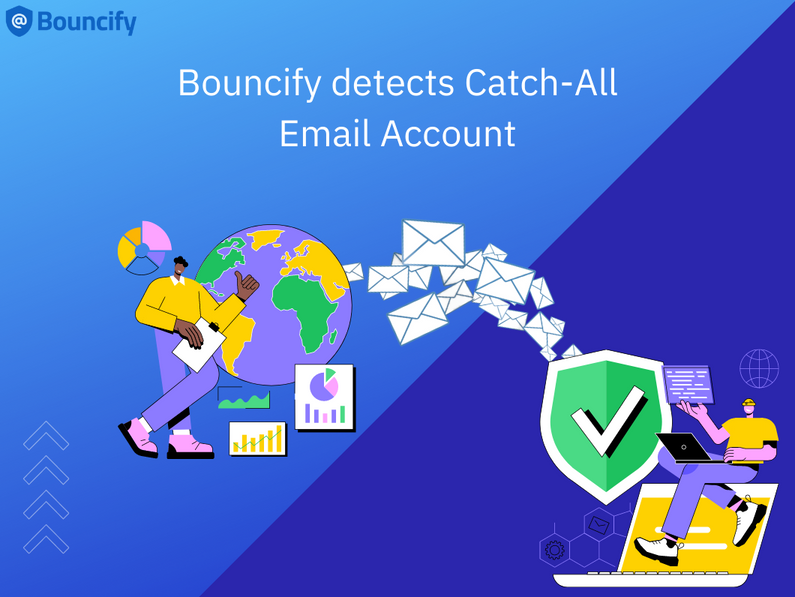What is a Catch-all Email Account?

Catch-all, also referred to as "accept-all," is a setting on the domain-wide mail server that instructs it to accept all emails delivered to the domain, regardless of whether the specified mailbox is present or not.
An email address designated to receive all correspondence sent to a domain's improper email address is known as a catch-all email account.
Businesses are aware of the value of email marketing. An essential component of any business is to make certain that all existing and potential customers can reach them .whenever they need to. Email service providers offer the option for a catch-all email account in this concern. A catch-all email, though, what is that?
Consider yourself a customer who is anxiously attempting to contact the renowned Anytime Store to place a sizable purchase of samples. You quickly enter the email address provided, but instead of entering sales@anytimestore.com, you put saels@anytimestore.com. Unintentionally, of course, but now your email won't get through to the sales team, and you can't buy anything.
Companies use catch-all accounts to prevent these unfortunate missing sales. Even if the email name is not registered with your domain, these email accounts receive every email sent to it. Even emails that don't exist are accepted by these servers. By doing this, you can prevent experiencing the sad accident mentioned above.
Pros of catch-all email:
It should go without saying that companies may benefit greatly from this catch-all email feature, which is why around 30% of B2B email servers are catch-all servers. Catch-all emails provide organizations with more advantages than just assuring that they get all emails sent to their domain. One of the primary advantages is the ability to foster relationships with its users.
The catch-all servers ensure that as a business, do not miss any prospects, consumer issues, or straightforward inquiries from your base. This kind of assured communication ensures that you can run the greatest company possible and build stronger bonds with your clients.
Catch-all and Hard bounce:
Catch-all emails are an excellent technique to make sure that a business receives every email sent to their domain, but they may also be risky for marketers attempting to contact these organizations. For B2B marketers, these catch-all emails may result in hard bounces, which will harm your sender score and unavoidably hamper your email marketing campaigns resulting in losing time and money. I'm puzzled as to how a catch-all email could possibly cause such harm to your email campaigns.
This configuration was made so business could evaluate emails, determine priorities, and then respond to unsolicited emails in the way they saw fit. We don't just leave those "unwanted emails" in the inbox. They are thrown back. A B2B marketing campaign might suffer greatly from these delayed bounces.
When an email is returned to you because the sender doesn't exist or the address is incorrect, this is known as a hard bounce. Catch-all emails would seem to ensure that these scenarios don't arise, but sadly, that isn't the case. Your email might still be rejected by a catch-all email and returned to you. A catch-all email might first accept your message but subsequently reject it, which is the difference.

Solution:
So while emailing to catch-all accounts can be a threat to your sender reputation, not working with businesses for fear of interacting with catch-all accounts is not the solution . Thankfully, Bouncify is way ahead of you. Catch-all emails are identified when uploaded to the list.
You can track them more effectively by identifying the catch-all emails you receive. We recommend segmenting and closely monitoring your catch-all emails. Delivered and processed mail can be moved to the primary mailing list. However, if your catch-all emails are stagnating, it's important to monitor them. If an email sent to a particular domain later bounces, remove the email from the list to protect your sender reputation.